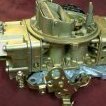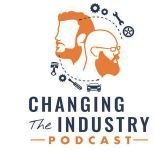Marking up parts
-
Available Subscriptions
-
Have you checked out Joe's Latest Blog?
-
By Joe Marconi in Joe's Blog0 commentsIt always amazes me when I hear about a technician who quits one repair shop to go work at another shop for less money. I know you have heard of this too, and you’ve probably asked yourself, “Can this be true? And Why?” The answer rests within the culture of the company. More specifically, the boss, manager, or a toxic work environment literally pushed the technician out the door.
While money and benefits tend to attract people to a company, it won’t keep them there. When a technician begins to look over the fence for greener grass, that is usually a sign that something is wrong within the workplace. It also means that his or her heart is probably already gone. If the issue is not resolved, no amount of money will keep that technician for the long term. The heart is always the first to leave. The last thing that leaves is the technician’s toolbox.
Shop owners: Focus more on employee retention than acquisition. This is not to say that you should not be constantly recruiting. You should. What it does means is that once you hire someone, your job isn’t over, that’s when it begins. Get to know your technicians. Build strong relationships. Have frequent one-on-ones. Engage in meaningful conversation. Find what truly motivates your technicians. You may be surprised that while money is a motivator, it’s usually not the prime motivator.
One last thing; the cost of technician turnover can be financially devastating. It also affects shop morale. Do all you can to create a workplace where technicians feel they are respected, recognized, and know that their work contributes to the overall success of the company. This will lead to improved morale and team spirit. Remember, when you see a technician’s toolbox rolling out of the bay on its way to another shop, the heart was most likely gone long before that.
-
-
Similar Topics
-
By carmcapriotto
Welcome to the Auto Repair Marketing Podcast with Brian Walker. In this solo episode, Brian discusses the importance of taking massive action during slow business periods.
Drawing from a recent conversation with a shop owner, he shares strategies to combat slow times, including leveraging networking groups like BNI, using your CRM effectively, creating engaging video content, and offering incentives.
Brian also highlights the importance of personal health and well-being, emphasizing that a healthy business owner is crucial for a thriving business.
Tune in for practical tips to help fill your bays and keep your business thriving.
Thank you to RepairPal for sponsoring The Auto Repair Marketing Podcast. Learn more about RepairPal at https://repairpal.com/shops
Lagniappe (Books, Links, Other Podcasts, etc)
Greg Buckley at Buckley's Auto Center : https://www.youtube.com/@BuckleysAutoCare/featured
Charlie's Foreign Car
https://www.youtube.com/@fixingcars
Royalty Auto Service
https://www.youtube.com/@theroyaltyautoservice
Dave’s Auto Center
https://www.youtube.com/@DavesAutoCenterCenterville
How To Get In Touch
Group - Auto Repair Marketing Mastermind
Website - shopmarketingpros.com
Facebook - facebook.com/shopmarketingpros
Get the Book - shopmarketingpros.com/book
Instagram - @shopmarketingpros
Questions/Ideas - [email protected]
Click to go to the Podcast on Remarkable Results Radio
-
By carmcapriotto
Thanks to our partners, NAPA TRACS and Promotive
In this episode of Business by the Numbers, Hunt explores the benefits and considerations of owning your auto shop's real estate. Learn about financing options, affordability, and real-life examples to help you make an informed decision.
-Understand different financing options for purchasing real estate.
-Assess your shop's ability to afford property ownership.
-Learn the long-term benefits of owning your business premises.
-Real-life examples to illustrate key points.
Thanks to our partners, NAPA TRACS and Promotive
Did you know that NAPA TRACS has onsite training plus six days a week support?
It all starts when a local representative meets with you to learn about your business and how you run it. After all, it's your shop, so it's your choice.
Let us prove to you that Tracs is the single best shop management system in the business. Find NAPA TRACS on the Web at NAPATRACS.com
Paar Melis and Associates – Accountants Specializing in Automotive Repair
Visit us Online: www.paarmelis.com
Email Hunt: [email protected]
Get a copy of my Book: Download Here
Aftermarket Radio Network
Click to go to the Podcast on Remarkable Results Radio
-
By carmcapriotto
Thanks to our Partner, NAPA Auto Care Alex Saladna from WickedFile discusses the challenges shop owners face in tracking parts, expenses, and managing profit margins. With real-life examples of shop owners discovering hidden costs and inefficiencies, this episode is a must-listen for anyone looking to optimize their business operations. Alex Saladna, WickedFile Show Notes
The Brakes for Breasts Initiative (00:00:15) An initiative by two shop owners to raise funds for a vaccine for triple negative breast cancer. https://brakesforbreasts.com Challenges in Business Management (00:02:06) The challenges in tracking parts, expenses, and managing profit margins in the automotive industry. Founding of WickedFile (00:02:38) How WickedFile was founded and the motivation behind creating a parts tracking solution for the auto repair industry. Importance of Tracking Spending and Financial Documents (00:06:05) Discussion about the significance of tracking spending and managing financial documents in the automotive industry, including the risks of financial discrepancies. Identifying Business Gaps (00:07:14) Alex highlights the importance of identifying gaps in business operations and the potential financial impact. Efficient Parts Tracking and Profit Management (00:09:25) Discussion about the significance of efficient parts tracking and managing profit margins in the automotive industry. Tracking Vendor Credits (00:10:35) Discussion about the processes and disciplines for tracking vendor credits and ensuring the accuracy of financial transactions. Simplified Document Management (00:12:04) Explanation of the simplified document management process offered by WickedFile, including email invoicing and categorization. Efficiency in Document Retrieval (00:13:31) The efficiency of document retrieval in WickedFile's system and the benefits of streamlined data organization. Expense Management (00:15:40) Discussion about the upcoming features of WickedFile for expense management, including insights into business spending patterns. WickedFile's Integration with Management Systems (00:20:19) Explanation of the integration process and the management systems currently supported by WickedFile. Inventory Management and Disciplines (00:21:47) The importance of inventory management, including tracking parts and maintaining discipline in the system. WickedFile's Role in Enhancing Business (00:25:01) How WickedFile aims to enhance business operations, improve profitability, and address parts-related challenges. Training and Support for WickedFile Users (00:26:16) Details about the training, support, and enablement provided by WickedFile for its users. Impact of WickedFile on Business Operations (00:26:57) Real-life examples of how WickedFile helped businesses identify issues such as excessive spending and theft.
Thanks to our Partner, NAPA Auto Care Learn more about NAPA Auto Care and the benefits of being part of the NAPA family by visiting https://www.napaonline.com/en/auto-care Connect with the Podcast: -Follow on Facebook: https://www.facebook.com/RemarkableResultsRadioPodcast/ -Join Our Virtual Toastmasters Club: https://remarkableresults.biz/toastmasters -Join Our Private Facebook Community: https://www.facebook.com/groups/1734687266778976 -Subscribe on YouTube: https://www.youtube.com/carmcapriotto -Follow on LinkedIn: https://www.linkedin.com/in/carmcapriotto/ -Follow on Instagram: https://www.instagram.com/remarkableresultsradiopodcast/ -Follow on Twitter: https://twitter.com/RResultsBiz -Visit the Website: https://remarkableresults.biz/ -Join our Insider List: https://remarkableresults.biz/insider -All books mentioned on our podcasts: https://remarkableresults.biz/books -Our Classroom page for personal or team learning: https://remarkableresults.biz/classroom -Buy Me a Coffee: https://www.buymeacoffee.com/carm -The Aftermarket Radio Network: https://aftermarketradionetwork.com -Special episode collections: https://remarkableresults.biz/collections
Click to go to the Podcast on Remarkable Results Radio

-
By Changing The Industry
Episode 170 - The Future of Auto Parts Using Wiretronic's AI-Powered Solutions
-
-
-
Our Sponsors














Recommended Posts
Create an account or sign in to comment
You need to be a member in order to leave a comment
Create an account
Sign up for a new account in our community. It's easy!
Register a new accountSign in
Already have an account? Sign in here.
Sign In Now